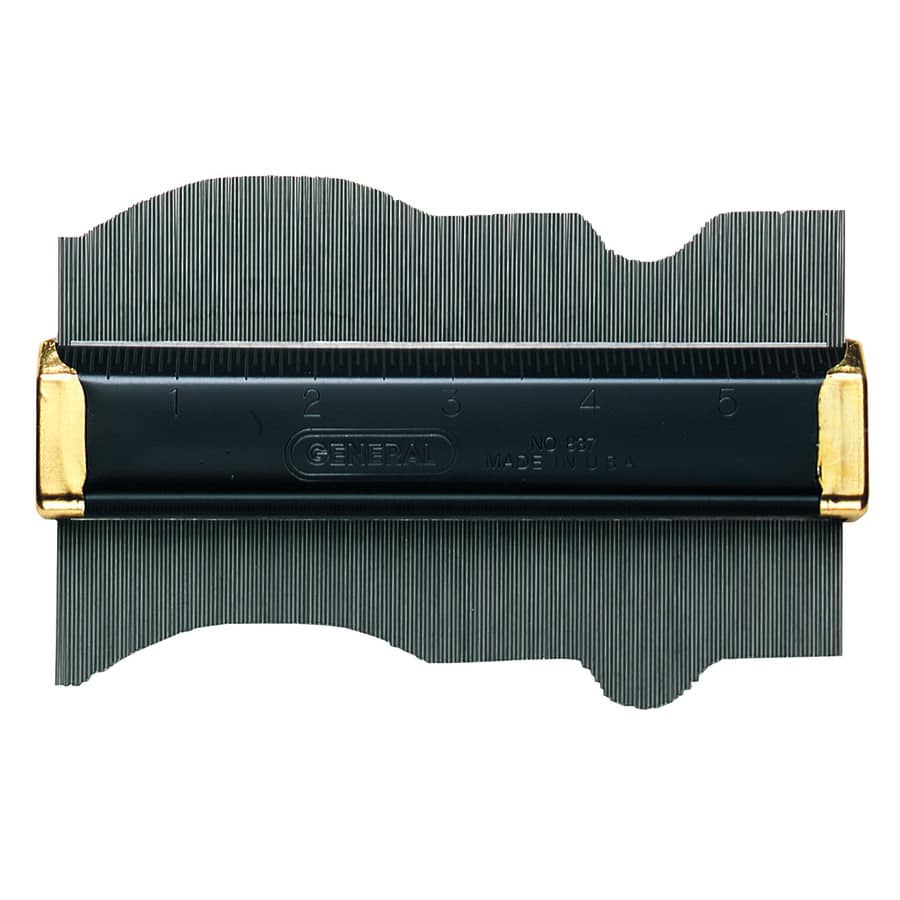
 |
|
#1
|
|||
|
|||
|
Cross sections or Bulkheads
Hi, I have a few kits I am wanting to work on. I'm trying to figure out the best way to get the profile for making bulkheads or the cross sections. I have a contour gage but it's fairly bulky and and not very accurate.
I've tried stiff wire also. I saw an old video of someone making a vacuum form kit and I think he used clay to get the cross section. Unfortunately I can't find it now. If anyone has any suggestions I would appreciate it. Thanks, Michael |
| Google Adsense |
|
#2
|
||||
|
||||
|
I bought a contour guage for floor trim that I use. It's about 4 inches long, but it is rather stiff. I'm still trying to figure out how to modify it so it'll be looser, but still hold the shape.

|
|
#3
|
||||
|
||||
|
Not very accurate looking but might work for those bulkhead contours.
Profile Gauge - quick, dirty, cheap - All Looks like you could play around with the idea to get a more accurate gauge. Maybe use toothpicks and some smaller corrugated cardboard.
__________________
~Doug~ AC010505 EAMUS CATULI! Audere est Facere THFC 19**-20** R.I.P. it up, Tear it up, Have a Ball |
|
#4
|
||||
|
||||
|
No matter how good your Profile Gauge, you'll be tweaking and adjusting the Bulkhead part you make.
So much so, that you might as well eyeball it...draw the shape with basic measurements and then start tweaking it. If you have a rigid enough assembly, like an airplane fuselage that can take a little bit of pressure, you could slice it up, at your bulkhead points, and then trace the profile at each slice. I always thought about slicing up a plastic model in this way. Maybe, assemble your paper fuselage. Do your best to get it formed to the proper shape. Then coat it with glue, varnish, resin, etc. Make it rigid...rigid enough to slice with a fine saw. Then trace the ends of each sliced section to get the bulkhead shapes. You'll still need to tweak those bulkhead slices.
__________________
SUPPORT ME PLEASE: PaperModelShop Or, my models at ecardmodels: Dave'sCardCreations |
|
#5
|
|||
|
|||
|
Hi, thanks for the info. I never thought of cutting the model into sections.
I'll have to try that. I asked the same question on the Large Scale planes forum. Someone posted a link a video where you use Plaster of paris to get the contour. https://www.youtube.com/watch?v=wqKQ5yQAYTQ I assume one would have to treat the paper with something, maybe epoxy or white glue before doing this with a paper model. |
| Google Adsense |
|
#6
|
||||
|
||||
|
Hi, if you have 5 view drawings of your subject you can make perfect contours/bulkheads/sections using some geometry...I do that for my cast turrets in 1/76 scale (T 55..T 62..etc), then fill the spaces with milliput or use it as a master to make a mould and cast it in resin...I do not believe in double curvatures in paper, they will never be other than a series of straight lines...although some modelers produce great spherical shapes, but the scale is way bigger than what I work in
|
|
#7
|
||||
|
||||
|
Hi Michael.
I used to work in a boat yard. This a method I've used in the real world. Possibly a bit too fiddly for small scale work thou. https://m.youtube.com/watch?v=BeVgByMnAqM
__________________
Matt. Stay warm, stay safe, stay indoors and build something! |
|
#8
|
||||
|
||||
|
Quote:
Do tell! Any tutorials on how to do this for those of us with less than advanced geometry skills? --jeff myMathSkills = savant + idiot - savant |
|
#9
|
|||
|
|||
|
IIRC, several years ago I recall seeing an article (maybe in Finescale Modeler) where the author was looking to get the cross-sections without chopping up the kit. Even more practical now with the prices of plastic kits!
Small diameter soft solder could be wrapped around a model kit fuselage to get the 1/2 cross section. Then gently traced on graph paper, traced with vellum to get both sides & a complete profile. Back in "the day" when Radio Shack existed, the had that kind of thing. Maybe check Ace Hardware or a big-box home center for the solder. It took him a couple of tries to get it right but worked out. |
|
#10
|
|||
|
|||
|
Michael
A guy going by Kartoon on the German forum kartonbau.de presented another method to derive the shape of crossections (bulkheads) from a real existing object. He used an old-fashioned slide projector to shine a vertical line of light onto the hull of a helicopter model whereever he needed a crossection and took a photograph from a 45 degree angle at each station. This gave him images of the crossections that were true in the vertical axis but scrunched in the horizontal axis. He then used image processing software like Gimp or Photoshop to stretch the images in the horizontal dimension to create the true crossections. Pretty clever, huh? Search for "Cobra-Projekt" on "kartonbau.de" for a few enlightening pictures. |
| Google Adsense |
 |
| Thread Tools | |
| Display Modes | |
|
|